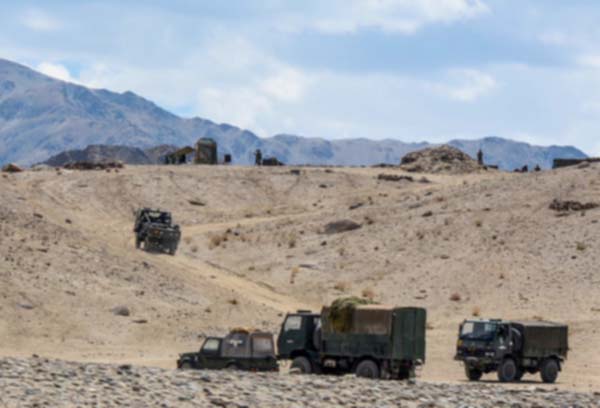By Ajai Shukla
In a blow to hopes of a Chinese withdrawal in the Hot Spring area of Ladakh, negotiators from China’s People’s Liberation Army (PLA) have refused to withdraw after crossing several kilometres (km) into India’s side of the Line of Actual Control (LAC). Government sources say local military commanders from the two sides have not agreed on the creation of a demilitarized, 2-kilometre-wide buffer zone.
This would separate Indian and Chinese troops who are currently deployed eyeball-to-eyeball in the vicinity of Patrolling Point 15 (PP-15) and PP-17A, along the Chang Chenmo River. Near PP-15, where an estimated 1,000 Chinese soldiers have intruded 4 km across the LAC, and extended a road 3 km into Indian-claimed territory, they are being blocked from further ingress by a similar number of Indian troops.
At the nearby Gogra Post, near India’s PP-17A, about 1,500 soldiers from either side are in confrontation after the PLA intruded about 2 km into the Indian side of the LAC. The Chinese are flatly refusing to withdraw from their positions, arguing that they are on their own side of the LAC and it is up to the Indian side to withdraw.
The basis of negotiations, which is a simultaneous withdrawal of one km by both sides, is disadvantageous to the Indian side, because the Chinese have already intruded 2-4 km into Indian-claimed territory. Consequently the entire buffer zone would be set up on Indian Territory. Yet, the Chinese are refusing to concede even this.
Anticipating the need to back up their intruding troops in the Gogra Post area, a large number of PLA troops have concentrated on the Chinese side of the LAC across from India’s PP-18, 19, 20, 21, 22 and 23, which is east of Gogra Post. Chinese artillery guns have been observed deployed across the LAC from PP-19.
With the Chinese also refusing to reverse their intrusions in May-June into the Depsang (12-15 km) and Pangong Tso (8 km) areas, the only sector where disengagement has been agreed is the Galwan River valley. There, the Chinese agreed to withdraw on terms disadvantageous to India, involving the concession of one km of territory at PP-14.
In case the Chinese continue refusing to withdraw, they would have effectively shifted the LAC to India’s disadvantage all along the Eastern Ladakh border. The LAC would have shifted westwards by 12-15 km at PP-10, 11, 11A, 12 and 13 in the Depsang area; by one km at PP-14 in Galwan; by 2-4 km at PP-15, 17 and 17A; and by 8 km in the Pangong Tso northern bank.
This would be the largest loss of territory to China since the 1962 war, when the PLA captured, and has since retained, some 3,000 square km of territory in Ladakh. Army sources believe China may be acting preemptively to forestall any Indian advance into Aksai Chin, through which their strategic Xinjiang-Tibet Highway (numbered G-219) passes. Safeguarding G-219 involves closing off India’s “northern route” through Daulat Beg Oldi and Depsang, shutting Indian access to Depsang by interdicting the road from Darbuk along the Shyok River.
The PLA would also like to close off Indian access through the “central route” from the Hot Spring area to Kongka La and Lanak La and from the Pangong Tso, via Khurnak Fort. Finally, the PLA is looking to shut off the “southern route” from Demchok, which provides India the shortest access to Highway G-219.


